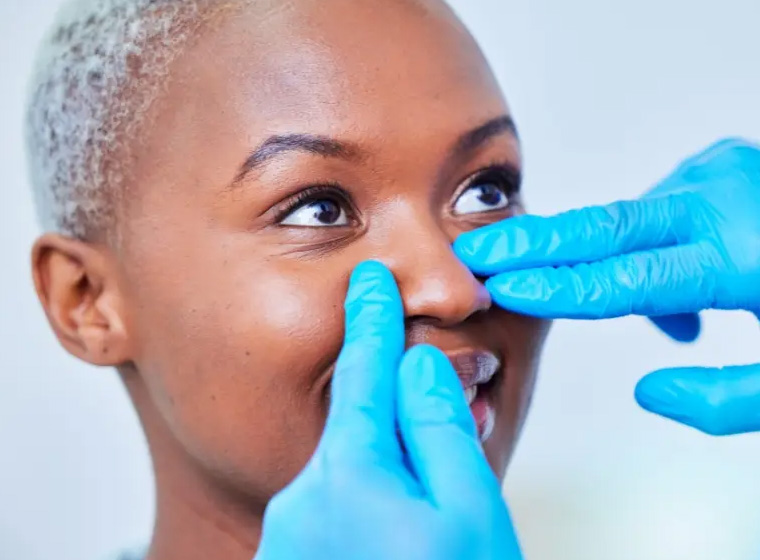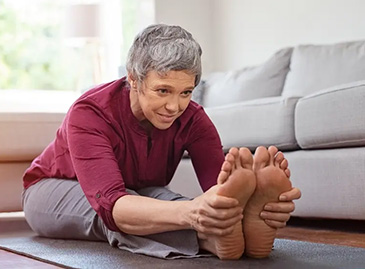
Rhinoplasty (nose job): Types, Benefits, Risks, and Recovery
Rhinoplasty is a cosmetic surgery known as a nose job. Some experts also refer to rhinoplasty as nasal surgery or nose reshaping. The cosmetic procedure helps reconstruct a person’s nose to improve the nasal appearance and function. The upper region of your nose consists of bone, while the lower portion consists of cartilage.
African rhinoplasty refers to the surgical reshaping of your nose’s bone, cartilage, and skin as a person of African origin. Cosmetic surgeons perform this procedure on people from Africa, African Americans, non-Caucasians, and other ethnic groups. Our globe consists of different people from different ethnic backgrounds.
All ethnic groups possess unique nasal and facial characteristics. However, African rhinoplasty aims to reshape your nose and still retain your background ethnic nasal characteristics. Despite the complexity of this procedure, cosmetic surgeons can help achieve your aim.
Does getting a nose job worth it?
Regarding the American Society of Plastic surgeons’ report, ethnic rhinoplasty is one of the commonest cosmetic procedures people undergo in the United States. In 2020, over 352,000 nose job procedures were carried out. However, researchers have proposed that this population will continue to rise as persons of different ethnic backgrounds become more concerned about their looks.
Furthermore, getting an African rhinoplasty is a significant health improvement. People often judge you by your look, which may lower your self-esteem. Getting a rhinoplasty improves your self-esteem and quality of life. You may find yourself smiling a lot more than before. But, consider your choices with your surgeon. Your surgeon will inform you if you’re an ideal candidate for this procedure.
Why do people undergo this procedure?
As people, we have every right to decide how we want to look and the way others see us. However, your decision is in your hands, and you can carry your health care provider along in the decision-making process. Some people may feel their nose is too big for their facial structure or does not fit their facial look. However, if you have an African origin, you may decide to undergo an African Rhinoplasty.
Additionally, if you are not a fan of the bumping bridge of your nose, you may want a nose job. In some cases, you may want to change the look of the tip of your nose, and you will need nose surgery to achieve this. If you prefer a narrow nose, rhinoplasty may be an option to perform.
The difference you may notice in nasal shape
Within the human population, our nasal shape varies. Scientists are developing an interest in studying our different facial characteristics. This research has brought about some know features such as skin color (skin pigmentation) and facial shape. However, research indicates that our noses’ width may be in correlation with temperature and humidity. People that have wider noses live in warm and humid climate regions.
In addition, cold-dry climate regions consist of people with a more narrow nose. Although scientists suggest that environmental adaptation may contribute to our nasal shape, it is not the only contributing factor. A man or a woman of an African origin possesses a flat nasal bridge with a small projecting bridge. The most comprehensive and prominent noses are often found in people with African heritage. There may be an absence of a protruded bridge.
You may require nose surgery to compliment the tip projection of your nose if you desire to increase the dorsum of your nose.
Types of nose surgeries
Getting nose surgery may depend on the reason and what you want to achieve with your outward look. However, you may choose from the most familiar types of nose surgeries. These includes:
- The removal of the hump on the nose
- Straightening the bridge of the nose
- Reshaping the tip of the nose
- Reducing the size of the nose
- Nasal correction after injury
- Breathing passage opening/enlargement
- Increasing the nose size
Furthermore, it is not advisable to allow teenagers (age 10 – 19) rhinoplasty. It may deform their facial structure as their nose is not mature enough. In other words, your doctor will recommend a nose job when you can boast of a fully mature nose. Also, speak with your surgeon to be able to make an informed decision regarding your nostrils.
Risks of performing nose job
Generally, all types of surgeries often come with the risk of infections and bleeding. If you wish to perform African rhinoplasty procedures, you may be at risk of the following;
- Bleeding from your nose
- Scars
- Development of numbness in the nose
- Difficulties in breathing
Consequently, if you find the first operation not satisfying enough, speak with your cosmetic surgeon. Frequently, your surgeon will schedule you for second nose surgery. However, your surgeon will state why you should allow your nose to heal completely before the second operation. Typically, the complete healing process might take up to 12 months.
How do you prepare for Rhinoplasty?
Before you schedule an appointment for a nose job with your surgeon, you may talk with them about the essential factors to consider. Depending on your availability, the meeting might be in phases. These include;
Your health history:
It is essential to discuss your medical history with your surgeon. If you have an account of nasal obstruction and surgeries, inform your surgeon. If you are a known bleeding disorder patient, rhinoplasty might not be the best option.
Physical examination:
Your doctor may carry out physical assessments such as observing your facial appearance and looking out for the thickness of your skin. Your doctor will also check for the cartilage strength at the tip of your nose. All these examinations and blood tests will help your doctor know what changes need to be made to your look.
Photograph:
Your nose photograph will be taken from different angles. Your surgeon will use computer software to manipulate the image to show you the possible result after the procedure. Your doctor will use the photos taken to access before and after the procedure.
Expectation discussion:
Your doctor will talk with you about the possible risk associated with rhinoplasty. They will further discuss how this particular surgery works and what you should expect. If there may be a need for any complimentary surgery like chin augmentation, your cosmetic surgeon will discuss this with you.
Rhinoplasty procedure in brief
After undergoing the different preparation phases, you will proceed to the procedure stage. Generally, your surgeon will carry out this procedure within a hospital. Alternatively, an outpatient surgical facility may be preferable. Your surgeon may use local or general anesthesia. The choice may depend on the complexity of the procedure.
Furthermore, your doctor may use local anesthesia. They will administer a pain-numbing medication into your nasal tissues via injections. Medications may also be given through an IV line to make you dizzy. But, you will still be awake. On the other hand, if your doctor decides to use general anesthesia, you will have to inhale a drug to make you feel dizzy. This drug may be given through an IV line too.
In addition, once you are numb, your surgeon will make a small cut on your nose base. The skin of your nose will be separated from the bone and cartilage. Then, reshaping begins. If your surgeon sees that you may require more cartilage, he may get more from the inner part of your nose or your ear. After the reshaping process is done, your surgeon will apply stitches on the small cut made earlier.
You will be in a recovery room under close monitoring of the health team until you regain consciousness.
Recovery after Rhinoplasty
After completing your nose job, your surgeon may place a supportive device (splint) on your nose. This splint will help the new shape of your nose. Generally, when you regain consciousness, you may leave for your home that same day if there are no complications.
Ensure you rest your head in an elevated position above your chest. The elevation will help reduce bleeding and swelling from the nose. However, your surgeon may leave a drip pad under your nose. The pad will absorb the light bleeding and mucus after the procedure.
Your doctor will advise you to take certain precautions after the procedure. These include but are not limited to;
- Swimming
- Avoid biting hard on food
- Engaging in strenuous activities
- Gently brush your teeth to avoid movement in the upper lip
- Eat food that contains fiber, such as fruits and vegetables
- Do not blow your nose.
Just like every surgery, a follow-up visit will be required. Ensure you don’t miss a follow-up appointment with your surgeon. Discuss every change you notice with them and follow their instructions. Your doctor will always help you make an informed decision.
Farewell
Generally, getting an African rhinoplasty is safe. However, the healing process may take time, a few weeks. Reshaping your nose will help increase your self-esteem, thereby reducing your risk of depression. However, to appreciate the result of your nose job, it may take up to a year.
Rhinoplasty Price in Turkey



